Making a decoction is a simple way to enjoy the nourishing gifts of hearty roots, berries, and barks. A decoction is made through gently simmering herbs in water on the stovetop. Simmering hearty plant parts like roots, berries, and barks allows us to more fully extract their constituents. One of my favorite decoctions to make is my Autumn Morning tea blend, which I’ll show you how to make below.
As an Herbalist, I try to live my life in accordance with the cycles of nature. This looks like creating daily routines that are in harmony with the seasons. For the past six years I have lived in a redwood cabin in the forest with only a wood-burning stove as my source of heat. Living immersed in nature in this way has helped me to notice the patterns of the seasons transitioning. I wake up at dawn most days, and the mornings when I awake to see my breath in my cold home signals that Autumn has arrived. Tending to both the warmth within my home and my body transitions into my main priority, and my morning ritual begins with tending the fire and making myself a nourishing cup of herbal tea.
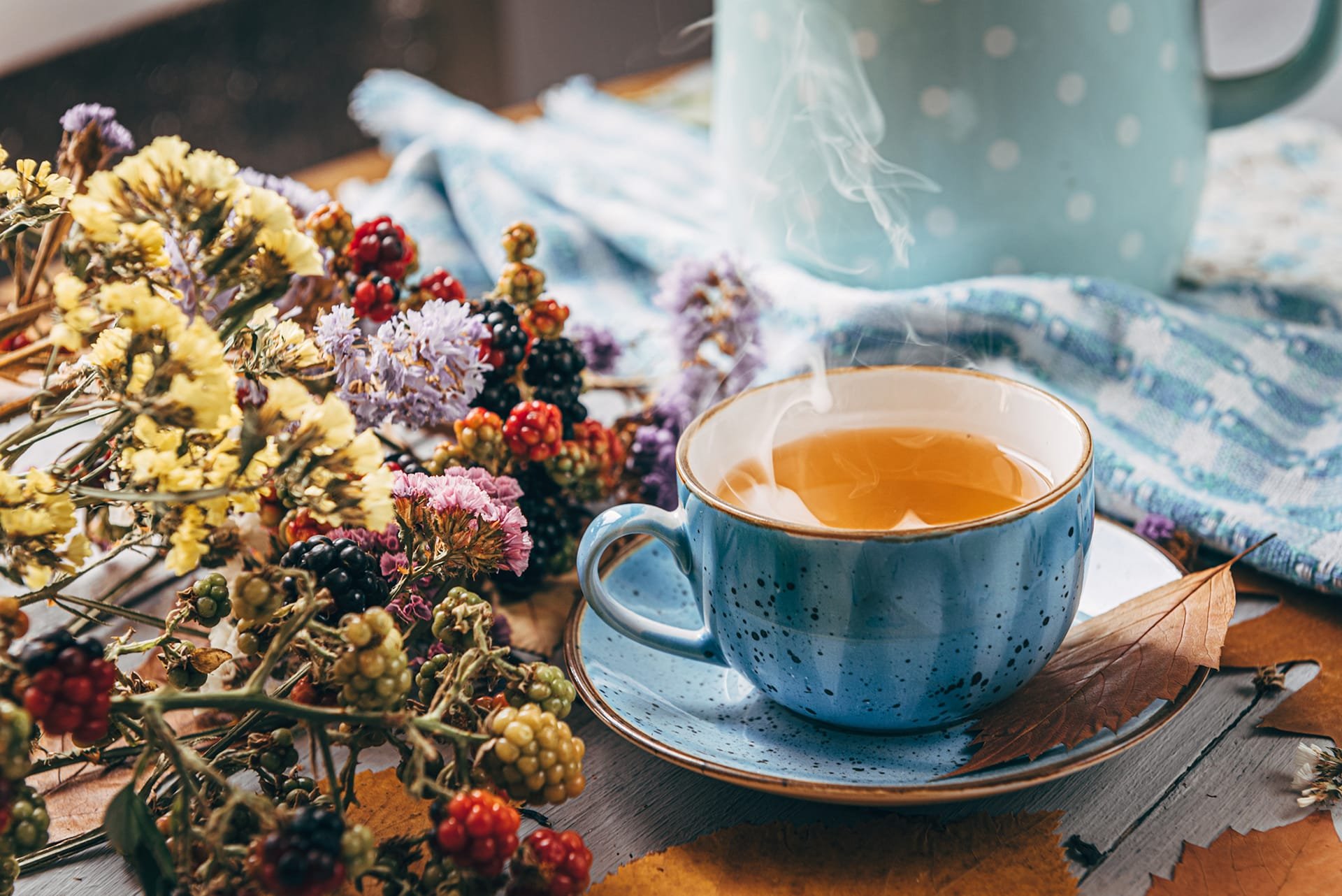
Why I Love Herbal Tea
Herbal tea is a simple yet profound form of medicine. Water coaxes out the medicinal properties from the plants while also absorbing the plant’s pigments. The warmth is an embrace to our bodies. The aroma offers the wisdom of slowing down and breathing deep. Herbal tea is one of the oldest forms of medicine. Whether you are having a cup of herbal tea in silence or sharing a pot of tea with loved ones, it is a reminder of connection – to the plants, to the water, to ourselves, to each other.
Now that fall has arrived, making yourself a cup of tea is a grounding way to begin your day. It is also an easeful way to incorporate herbs into our daily lives without needing extra tools or space.
What’s the Difference Between an Infusion and a Decoction?
There are two main ways of making herbal tea: an infusion and a decoction. Typically an infusion is made with the softer parts of the plant (the leaves and flowers), while a decoction is made with the heartier parts of the plant (the roots, barks, berries).
While an infusion pours boiling water over the herbs allowing them to steep, a decoction is made through gently simmering herbs in water.
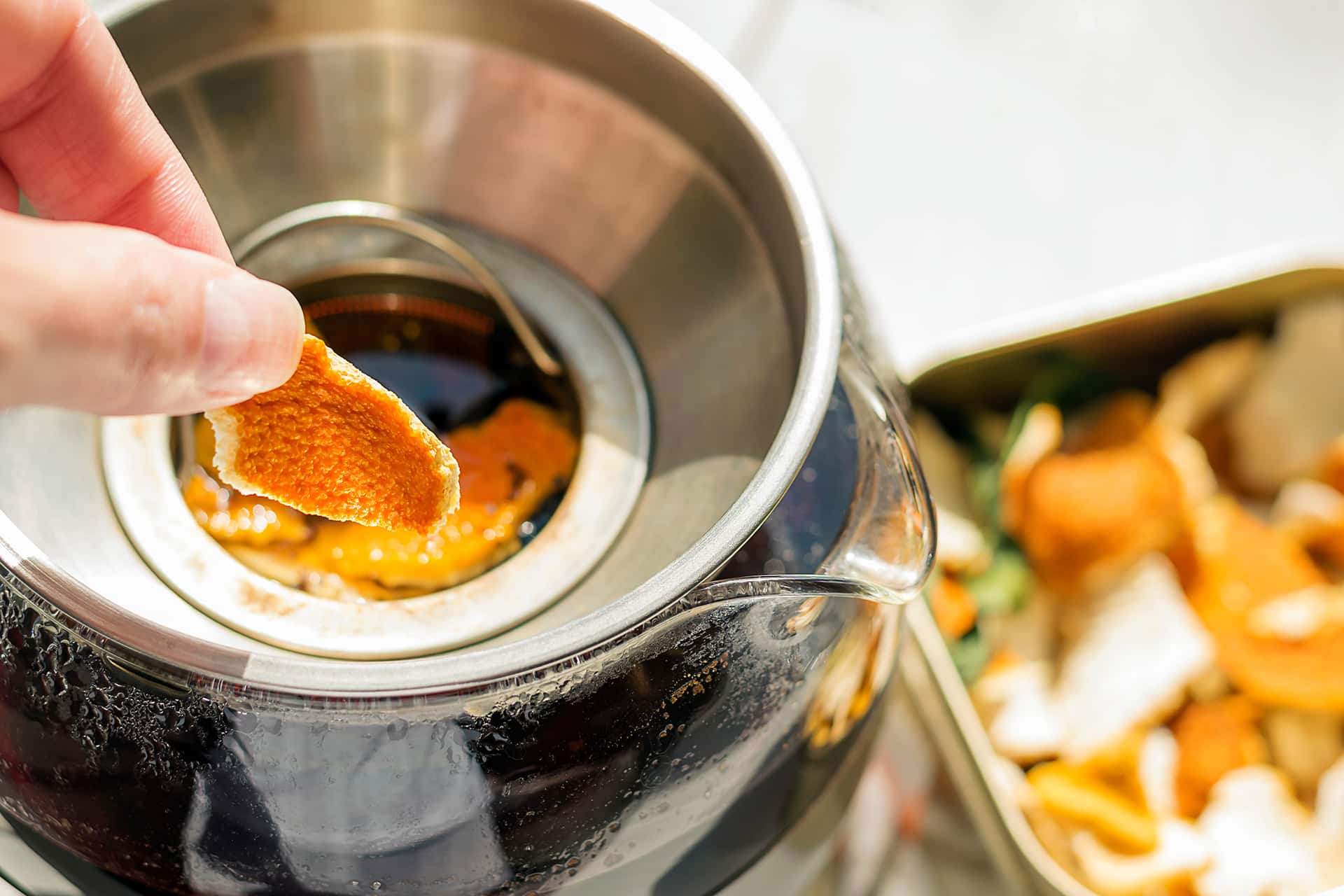
How to Make an Herbal Decoction
Here is my delicious recipe for Autumn Morning tea. This grounding tea blend nourishes the digestive system and calms the nerves. Since this blend is made with roots, berries, bark, seeds, and peel, I use the decoction method for preparing it. The longer some of these herbs decoct past the recommended time below, the more you may taste the medicinal bitter qualities of the plant.
For a stronger or more gentle cup of herbal tea, feel free to play with the ratio of herbs to water.
Ingredients you’ll need…
- 1 T roasted dandelion root
- 1 T hawthorn berry
- 1 tsp. orange peel
- 1/4 tsp. cardamon
- 1/4 tsp. cinnamon
- Measure out all of your herbs into the same pot.
- Add 4 cups of water into the same pot.
- On a medium-high heat bring your water to a gentle boil.
- Once your water is boiling, put a lid on the pot and bring it down to simmer.
- Let your decoction simmer for about twenty to thirty minutes.
- Remove your pot from the heat and let your decoction cool to a drinking temperature.
- Strain out your herbs and enjoy your cup of tea!
The Benefits of Dandelion Root
A familiar plant to many, dandelion root is one my favorites to have in tea. It is formulated in many tea blends marketed as coffee substitutes, as it offers a rich and nourishing flavor that helps to ground tea blends. Dandelion root is high in antioxidant and anti-inflammatory properties as well as being high in vitamins and minerals such as vitamin C and A, magnesium and potassium. It also supports the function and flow of the digestive system from the liver to our microbiome, which is another reason why I love starting my mornings with dandelion tea.

The Benefits of Hawthorn Berries
An antioxidant-rich plant that supports the strength and balance of our cardiovascular and circulatory system. The berries aid our body’s nervous system, supporting us during times of stress, agitation, and over excitement. High in flavonoids and essential minerals, it is an excellent herb to incorporate into daily wellness during fall and winter. You always know the seasons have changed when you begin to see the hawthorn berries on the tree.
The Benefits of Orange Peel
An uplifting aroma that awakens the senses while also having anti-inflammatory properties, orange peel stimulates our digestion as well as aids in digestive upset. It is high in vitamin C and flavonoids, offering our bodies immune and antioxidant support.
The Benefits of Cardamom
Cardamom is an aromatic spice that supports the distribution of heat throughout our body. The delicious aromas add a lovely flavor to tea blends while also being a digestive aid. During times of digestive upset, I love to simply chew on a couple of cardamom seeds to aid in bloating, gas, or nausea. Traditionally, Egyptians would chew on the seeds to freshen their breath (Sinadinos, 2020)

The Benefits of Cinnamon
Cinnamon is an aromatic plant that supports digestion and circulation. Through its circulatory action it warms the body supporting us during the colder months of the year. Cinnamon is also known to support the balance of our glucose levels, which makes it a lovely plant to start our days with. Cinnamon’s demulcent quality is coaxed out when in water, which offers this tea a soothing, hydrating quality.
How do you take a decoction?
Drinking a decoction is similar to drinking an infusion, which is the method of making tea that most people are familiar with. There are many ways you can incorporate herbal decoctions into your life, one of my favorite ways is as a morning ritual. Starting my day with herbal tea helps me to feel grounded, nourished, and hydrated. Another way is if I am beginning to feel under the weather, I use herbs such as echinacea root or rosehips in my decoction and I drink it throughout the whole day to help give my immune system a boost.
How do you make a decoction with fresh herbs?
Growing your own herbal plants and harvesting them for tea feels as exciting and empowering as growing your own food and cooking with it. When making a decoction with fresh herbs you will need to process the plants before following the directions above. For roots, it is important to clean and remove any soil or debris. I love using a vegetable brush to get within the crevices of the roots. It is also important to chop them up immediately as some begin to harden as they dry. For berries, I either use the whole berry as is, for example elderberries, or I cut them in half to remove the pit, such as hawthorn. Citrus peels are some of my favorite plants to make herbal tea with. They are full of vitamin C and their volatile oils are uplifting and mood enhancing during the colder seasons. It is important to buy organic citrus if possible as they are on the dirty dozen list. Simply keep the peel after enjoying the fruit, and chop it into a small dice.

What herbs can I use to make a decoction?
Herbs that can be used in decoctions include roots, berries, citrus peels, seeds and barks. Below are some examples from each category:
- Roots: burdock, dandelion, echinacea, ginger, turmeric, ashwagandha, astragalus
- Berries: hawthorn, rosehips, elderberries, schisandra, goji
- Citrus peels: orange, grapefruit, lemon
- Seeds: cardamom, coriander, fennel, fenugreek
- Barks: cinnamon, wild cherry
The Benefits of My Immune Supporting Autumn Morning Herbal Tea Blend
Fall is my favorite season in my forest home. The way the light shifts and glows amber through the thick trees of Doug Fir and Redwood. The changing colors of the Maples. The frog symphonies as the creek begins to fill with water. Tucked in the forest it is so peaceful and still — the perfect place to be present and enjoy a hot cup of my Autumn Morning herbal tea blend.
I love this recipe because it epitomizes the essence of fall: a cup of Autumn Morning tea holds the nourishing gifts of the roots and berries that are seasonally available to us this time of year. I feel so much gratitude for the process of decoction that allows us to pull the gifts and aromas of these tougher plant parts into the delicious tea water. It doesn’t take much time to make this decoction, and yet it offers us nourishment and warmth and the reminder that we too are cyclical beings that can offer ourselves a moment to slow down, be present, and simply enjoy the experience of tea.
Enjoy!



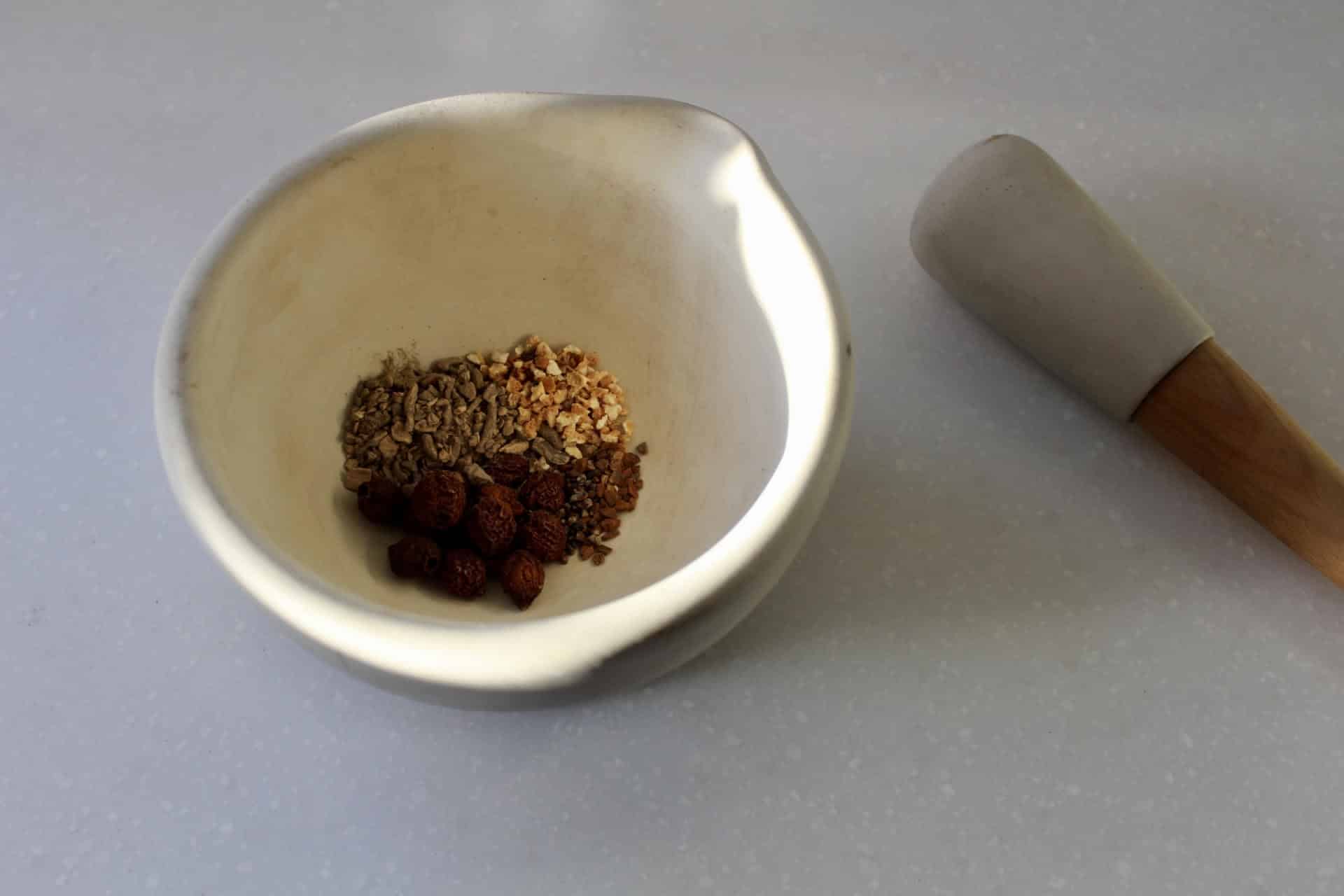

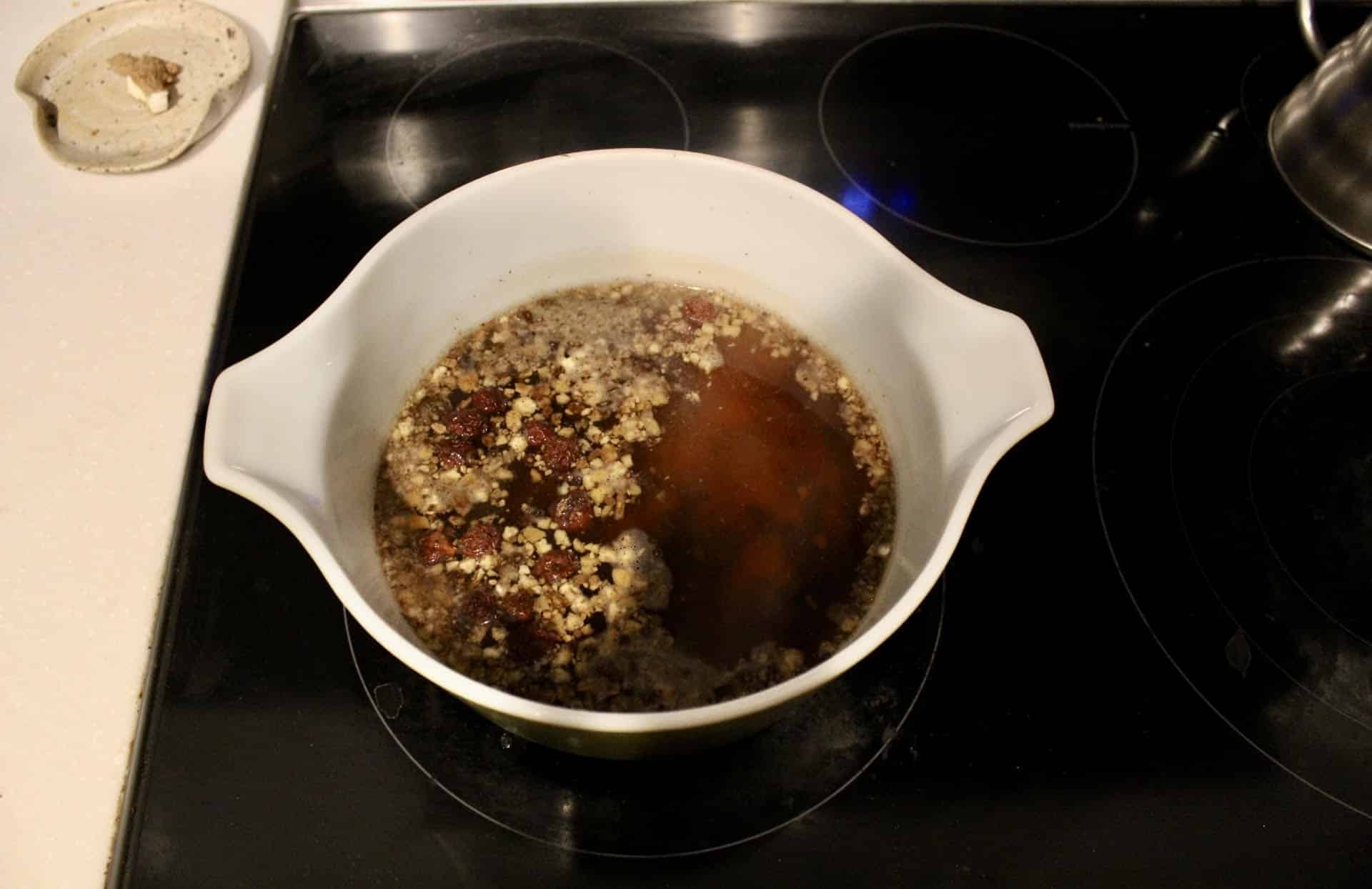
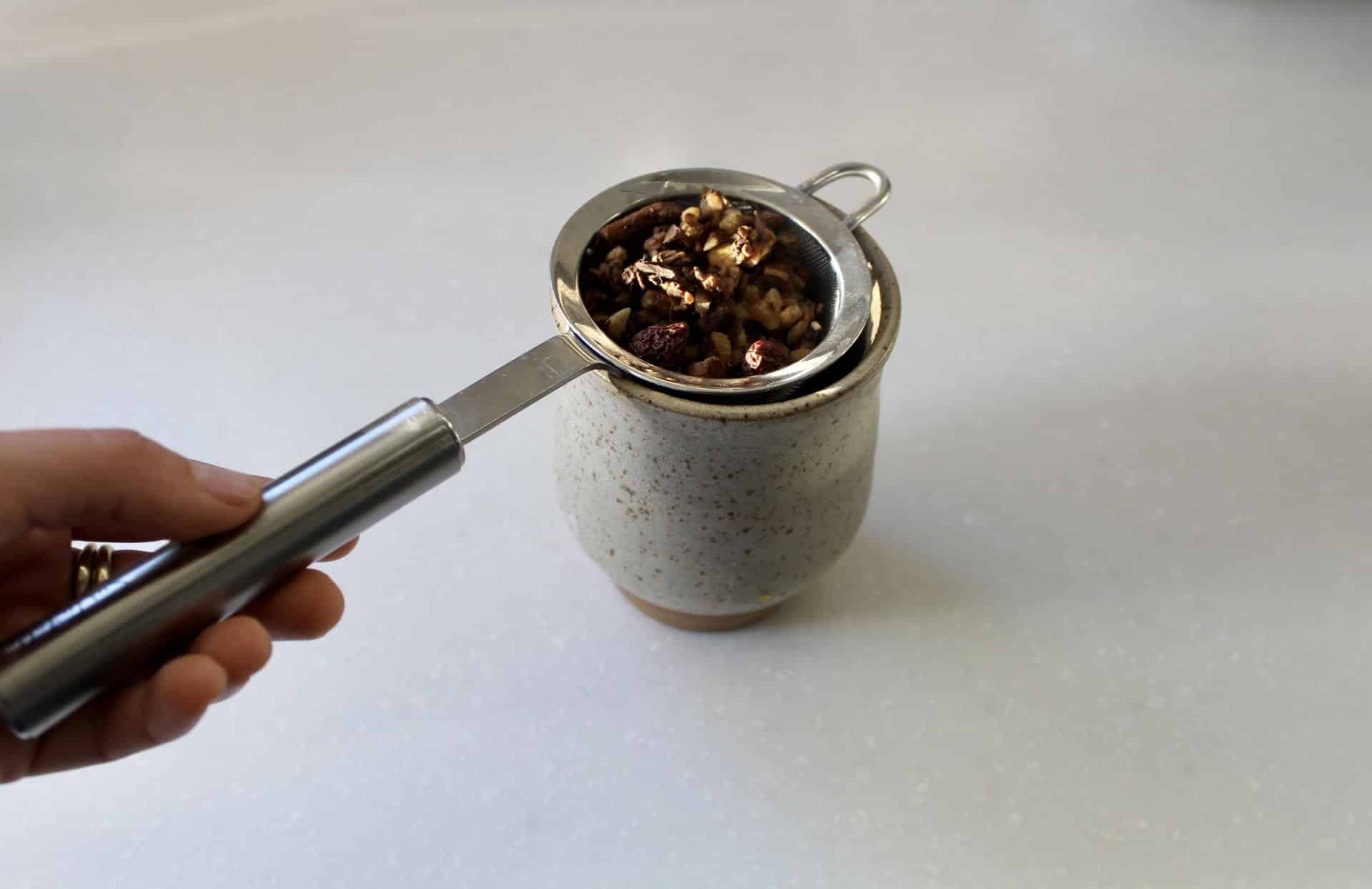






I’m planning on.going off grid as soon.as.I possibly can . ?? So.am getting all the information I can on any and all related information I can, and loading down my mind and tablet with it. Shelters , foraging hunting, trapping Herbal Medicine you know everything!????
Hi Jerome, Awesome you are going off grid. I am glad you are enjoying our blog posts on herbalism! Have a nice day!
This looks like a lovely recipe! I’m planning to make it, but wondered about the cinnamon and cardamom. Are you using them in powdered form, or as chips and pods? Thanks!
Hi Jaya, I am glad you plan on making the recipe! It looks like from the photos that Isabella DeCredico used cinnamon chips and hulled cardamon. Have a great day!
Hi, Li! Thanks for your reply! I brewed up a pot of this tea this morning, and am drinking a cup of it as I write :-) It is delicious! A great fall tea, and one I’ll be making again.